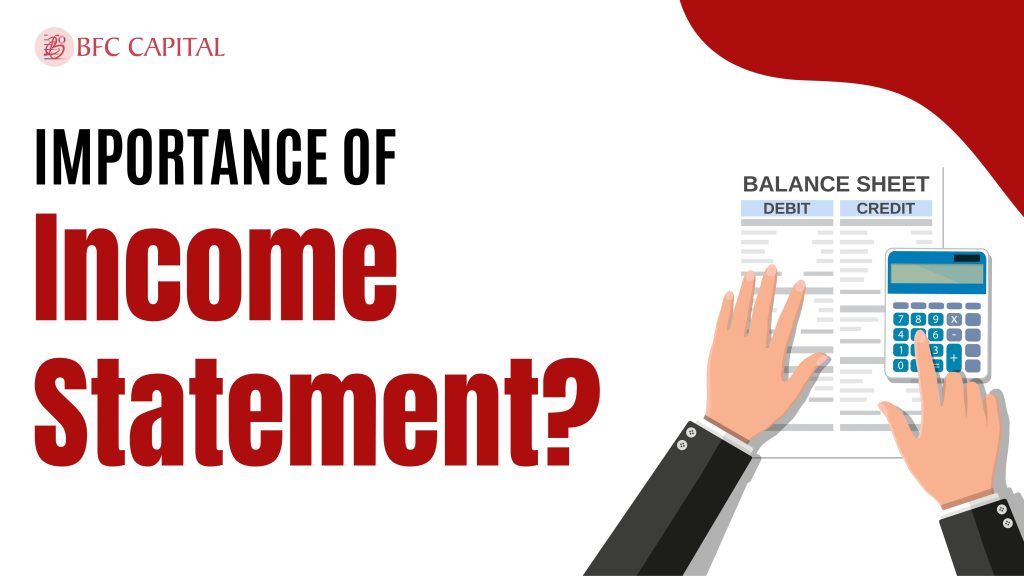
Ever wondered how businesses keep tabs on their financial health? More than just a matter of counting the money coming in and out, there sits an important financial document that allows the reader insight into a company’s performance over some period of time: the income statement.
In this article, we are going to analyze the importance of an income statement and what it actually is.
So, without any delay, let’s get started!
Table of Contents
Definition of an Income statement
Let’s start with a small definition of an income statement,
An income statement is a document of finance describing the revenues, expenses, and profit accruing to action by a company over some time, usually quarterly or annually as per company’s reporting needs.. It is also referred to as a profit and loss statement and is significant in that it is used as a tool for assessing the financial performance of the company. A statement of income starts with the revenues of a company, after which the cost of goods sold and the operating expenses are subtracted to give the net income or net loss.
This statement gives very valuable information as to whether a company is making or losing money; therefore, it finds its users among investors, creditors, and the company’s internal management, who refer in their judgment of a company on issues concerning profitability, efficiency, and general financial health. Actually, this statement of income is at the root of very important financial paperwork that allows stakeholders to assess the profitability of a business’s core operation.
Purpose of an income statement
An income statement serves many purposes. It is a means of measuring financial performance and summarizing revenues and expenses over time. The statement gives the stakeholders key insight into the profitability of the company. Such a financial document allows investors and creditors to make informed decisions about investment or creditworthiness, measure efficiency in operations, and provide them with a window view of the overall financial health of the company.
It also acts as a good internal reference document for monitoring and managing the profitability and financial performance of the firm. In a nutshell, an income statement is important in offering insight into the financial health of a company.
Importance of the Income Statement
Now we know what an income statement is and have also checked its purposes, next let’s step into the crucial part with the analysis of the importance of the income statement:
1. Performance Appraisal: An income statement shows how the company has been doing financially within a particular period and hence enables various stakeholders to appraise the profits of the company.
2. Decision Making: In a very decision-making manner, an income statement gives a sound indication of the company’s income, its expenses, and the overall financial position of the company.
3. As an Investors’ Tool to Analyze Investment: By taking an income statement alone, an investor would be able to know the viability of pursuing a business in terms of returns and growth, thereby giving one an upper hand at the decisions of investing.
4. Comparative Performance: The performance of the company can be compared over different periods in order to point out attained trends and strategic fit.
5. Budgeting and Forecasting: Based on the income statement, budgeting and forecasting performed prior to business activity assignment allow the companies to set realistic and reliable financial goals and strategies.
Types of income statements
There are two major types of income statements; let us elaborate below in detail:
1. Single-step income statement: This is that form of an income statement which groups all expenses under one head and all incomes under another, irrespective of their nature, and then gives a net income figure leading to a single figure for net income. It is, therefore, a very simple type of statement and is mostly used for small businesses.
2. Multiple-step income statements: This kind of an income statement will be having operating revenues, cost of goods sold, gross profit, operating expenses, other revenues and expenses, and lastly, the net income. As shown it is a better view with much higher completeness of the company’s performance in the financial aspect.
Key metrics in an income statement
Some of the most common key metrics in the income statement are revenue, cost of goods sold, gross profit, operating expenses, operating income, net income, and earnings per share. Revenue represents the total income from sales, while the cost directly incurred to produce the goods sold is referred to as the Cost of Goods Sold.
The difference between the first and the last one is Gross profit. Operating expenses contain some costs that are directly tied to production, but they also include a lot of costs that are not. Moreover, operating income is remaining profit after subtracting the operating expenses from the gross profit. Finally, net income is the ultimate profit which is calculated by;
Net Profit = Gross Profit – Operating Expenses – Interest – Taxes
This formula shows that you start with gross profit, then subtract operating expenses, interest, and taxes to get the net profit.
Whereas earnings per share is net income divided by outstanding shares. Here, Earnings Per Share (EPS) is a key financial metric that indicates the portion of a company’s profit allocated to each outstanding share of common stock. It is a measure of a company’s profitability and is often used by investors to gauge the company’s financial health.
Here is the formula to calculate EPS= Net Income / Outstanding Shares
On a parting note…
In simple terms, an income statement shows a layman’s version of the performance of an organization. It gives an insight into the revenues, expenses, and overall profitability of the firm over some time. Thus, understanding the income statement is basically a requisite for investors, creditors, and management to establish the firm’s financial health and make appropriate decisions to chart strategies towards future growth. An income statement can spell out to stakeholders whether or not the business generates profits, has controlled its expenses, and where, in fact, any improvements could be made.
In the end, the income statement has remained one of the key documents about the financial health and performance of a business.
We hope that this article helps you!
Please share your thoughts on this post by leaving a reply in the comments section. Contact us via Phone, WhatsApp, or Email to learn more about mutual funds, or visit our Website. Alternatively, you can download the Prodigy Pro app to start investing today!
Disclaimer – This article is for educational purposes only and does not intend to substitute expert guidance. Mutual fund investments are subject to market risks. Please read the scheme-related document carefully before investing.

Assistant Vice President – Research & Analysis
Akash Gupta heads the Research & Analysis department at BFC CAPITAL, where he combines in-depth market insights with strategic analysis. He holds multiple certifications, including:
- NISM-Series-XIII: Common Derivatives Certification
- NISM-Series-VIII: Equity Derivatives Certification
- NISM-Series-XXI-A: Portfolio Management Services Certification
- IRDAI Certification
With his expertise in equity, derivatives, and portfolio management, Akash plays a key role in providing research-backed strategies and actionable insights to help clients navigate the investment landscape.








Name: The Difference Between Growth Option & Dividend Option in Mutual Funds
says:[…] Please share your thoughts on this post by leaving a reply in the comments section. Also, check out our recent post on: “What Is an Income Statement and Its Importance?“ […]